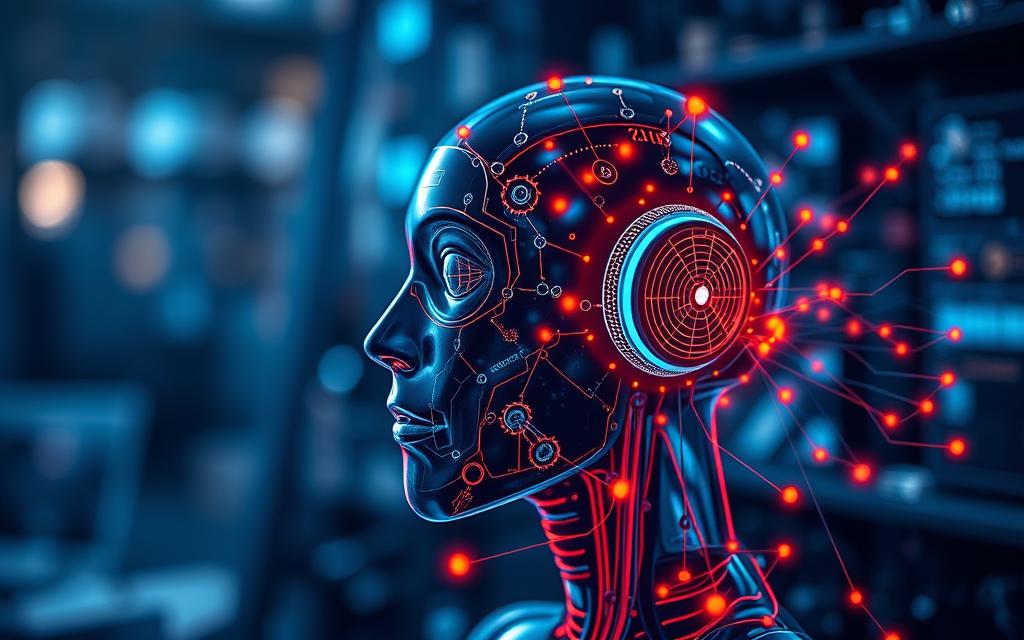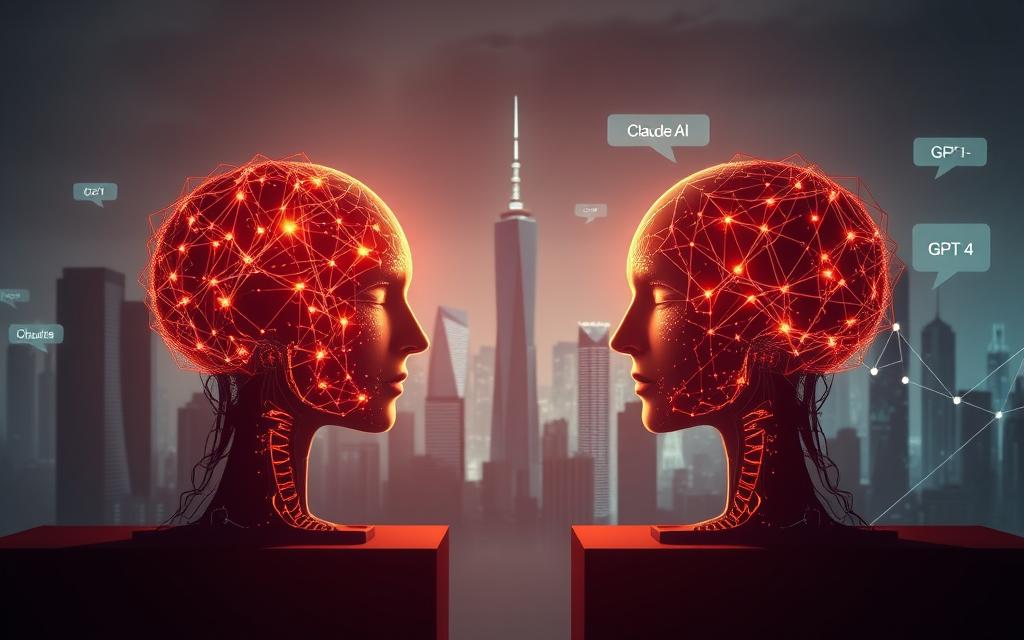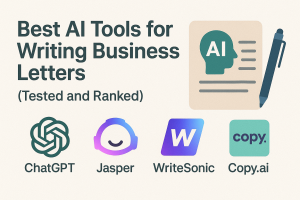Table of Contents
The world of artificial intelligence is rapidly evolving, with language models at the forefront of this revolution. Two prominent players in this field are Claude AI from Anthropic and GPT-4 from OpenAI. This article provides a comprehensive comparison of these two leading models, examining their strengths, weaknesses, and unique capabilities.
The comparison will delve into the technical foundations, architectural differences, and philosophical approaches that distinguish these powerful AI systems. By analyzing data on performance benchmarks, real-world applications, and specialized features, we aim to provide readers with the information needed to determine which model might better suit their specific needs.
Understanding the nuances between these models is crucial for harnessing their potential in generating high-quality content and expanding our collective knowledge.
Understanding the AI Titans: Claude AI and GPT-4
Understanding the nuances between Claude AI and GPT-4 is crucial in determining their applications and limitations. To appreciate the capabilities of these advanced AI models, it’s essential to delve into their backgrounds and the company philosophies that drive their development.
The Evolution of Large Language Models
The development of large language models has accelerated dramatically in recent years, driven by advancements in transformer architecture and natural language processing capabilities. This evolution has enabled increasingly sophisticated AI systems capable of processing complex data and generating human-like intelligence. The journey from earlier models to the current generation of advanced AI assistants has been marked by significant technological breakthroughs.
Key Players: Anthropic vs OpenAI
Anthropic, founded in 2021 by former OpenAI researchers including the Amodei siblings, has positioned itself as a company focused on AI safety and responsible development. With significant backing from Amazon and Google, Anthropic has made notable strides in AI learning and information processing. In contrast, OpenAI, with substantial investment from Microsoft, has pioneered many advances in the field and maintains its position as a market leader with its GPT series of models. The differing philosophical and technical approaches of these two company entities provide valuable context for evaluating the resulting AI systems.
Technical Capabilities and Architecture
Delving into the technical details of Claude AI and GPT-4 reveals their strengths and weaknesses in handling complex language tasks. Both models are built on transformer architectures, which are a type of AI model designed for high-performance natural language processing.
Claude AI’s Transformer Architecture
Claude AI’s transformer architecture processes user inputs by breaking them into tokens, creating vector embeddings, applying self-attention mechanisms, and generating probabilistic responses based on its training data. This architecture allows Claude AI to understand relationships between words across long sequences of text, making it effective for tasks requiring comprehensive context.
GPT-4’s Technical Foundation
GPT-4’s technical foundation builds on OpenAI’s previous models with significant improvements in reasoning capabilities, factual accuracy, and multimodal processing abilities. For more insights on GPT-4’s capabilities, you can explore advanced features and capabilities of similar models.
Context Window Comparison
A key technical differentiator between Claude AI and GPT-4 is the context window size. Claude Pro offers a 200,000 token context window, approximately 350 pages of text, compared to GPT-4’s 128,000 token limit. This larger context window gives Claude an advantage for tasks requiring analysis of lengthy documents or maintaining extended conversations with comprehensive context. As discussed on sites comparing AI models, the context window significantly impacts the models’ performance.
The technical architecture of each model influences its performance characteristics, with tradeoffs in speed, accuracy, and resource requirements. Understanding these differences is crucial for selecting the appropriate model for specific applications and tasks.
Feature Comparison: What Claude AI Offers
Claude AI offers a robust set of features that cater to diverse user needs. The AI model is designed to provide a wide range of functionalities, making it a versatile tool for various applications.
Claude Models: Opus, Sonnet, and Haiku
Claude AI offers a family of models with different capabilities and performance characteristics. The models include Claude Opus, the most powerful; Claude Sonnet, which is balanced; and Claude Haiku, the fastest. Claude Opus provides the most sophisticated reasoning and complex task handling, ideal for in-depth document analysis. Claude Sonnet balances speed and capability, suitable for general use. Claude Haiku prioritizes speed for real-time applications and simpler tasks.
Multimodal Capabilities
Claude AI’s multimodal capabilities allow it to process and analyze images alongside text, enhancing its functionality. Although it cannot generate images, its ability to understand visual data is a significant advantage.
Constitutional AI Approach
The Constitutional AI approach incorporates ethical guidelines and safety principles into Claude AI’s training process, ensuring a safer and more reliable user experience. This feature distinguishes Claude AI from other models.
By offering a range of models and features, Claude AI caters to various user needs, from complex task handling to real-time applications, while maintaining a focus on ethical AI use.
GPT-4’s Distinctive Capabilities
GPT-4 has emerged as a powerful tool in the AI landscape, offering a range of distinctive capabilities that set it apart from its competitors, including Claude AI. Its advanced features make it particularly versatile for various applications.

GPT-4 and GPT-4o Models
GPT-4 has evolved into a family of models, with GPT-4o (omni) being OpenAI’s latest and most capable offering. Designed to excel across text, image, and audio processing, GPT-4o represents a significant advancement in AI technology. OpenAI’s benchmarking suggests that GPT-4o outperforms Claude3 Opus in most standard tests.
Web Browsing and Plugin Ecosystem
A significant advantage of GPT-4 is its web browsing capability through integration with Microsoft’s Bing search engine. This allows GPT-4 to access current information beyond its training data cutoff. Additionally, the plugin ecosystem surrounding GPT-4 enables integration with third-party services and tools, extending its functionality beyond core language processing to interact with various web services and applications.
Image Generation Capabilities
GPT-4’s image generation capabilities through DALL-E integration provide a distinct advantage over Claude AI, allowing users to create visual content directly within the same interface. This feature makes GPT-4 particularly versatile for creative projects and tasks requiring current information. Furthermore, GPT-4’s integration with other OpenAI products creates a more comprehensive ecosystem for users already invested in these platforms.
Performance Benchmarks and Real-World Testing
Performance benchmarks and real-world testing provide crucial insights into the capabilities of Claude AI and GPT-4. These evaluations help determine which model excels in various tasks, from text processing to creative content generation.
Text Processing and Reasoning
Both Claude AI and GPT-4 demonstrate sophisticated capabilities in text processing and reasoning tasks. Claude AI often excels at nuanced understanding of complex instructions and maintaining consistency across long documents. According to Anthropic’s benchmarks, Claude3 Opus outperformed earlier GPT-4 versions in these aspects. However, OpenAI’s tests showed that GPT-4o surpassed Claude3 Opus in most metrics.
Code Generation and Analysis
Code generation and analysis is a key battleground for both models. GPT-4 has traditionally shown strength in code-related tasks, though Claude has made significant improvements, particularly in explaining code logic and providing step-by-step reasoning. Both models can write functional code in multiple programming languages and debug issues.
Creative Content Generation
For creative content generation, the models show different stylistic tendencies. GPT-4 often produces more varied and creative outputs, while Claude tends toward more consistent, structured content. The choice between the two may depend on the specific requirements of the task at hand.
| Feature | Claude AI | GPT-4 |
|---|---|---|
| Text Processing | Excels in nuanced understanding | Strong in complex tasks |
| Code Generation | Improved in recent versions | Traditionally strong |
| Creative Content | Consistent and structured | Varied and creative |
In conclusion, both Claude AI and GPT-4 have their strengths and weaknesses across different tasks. The choice between them will depend on specific needs and applications.
Practical Applications and Use Cases
Understanding the practical uses of Claude AI and GPT-4 is crucial for businesses and researchers alike. Both models offer powerful capabilities that can be leveraged in various contexts.
Business and Enterprise Solutions
In the realm of business and enterprise solutions, both Claude AI and GPT-4 excel in different areas. Claude’s strength in document analysis makes it particularly valuable for companies dealing with large volumes of documents, contracts, and research materials. GPT-4’s plugin ecosystem and web browsing capabilities offer advantages for businesses requiring integration with existing tools and access to real-time information for decision-making and operations.
Research and Education
In research and education settings, both models serve as powerful assistants for literature reviews, data analysis, and concept explanation. Claude’s larger context window offers advantages for analyzing lengthy academic papers. The Claude Projects feature allows researchers and educators to create dedicated workspaces with persistent context, making it easier to organize related materials and maintain continuity across multiple research sessions. This feature is particularly useful for managing complex projects and improving productivity.
Conclusion: Choosing Between Claude AI and GPT-4
The debate between Claude AI and GPT-4 doesn’t have a one-size-fits-all answer. The choice between these AI titans depends on specific use cases, priorities, and organizational requirements.
For users prioritizing document analysis and data privacy, Claude AI may be the superior choice. In contrast, those needing web browsing capabilities and image generation may prefer GPT-4.
Both models excel in code-related tasks and research applications. The decision for business and enterprise solutions should consider factors like data retention and integration capabilities. As these models evolve, staying informed about new capabilities and benchmark results is crucial for making informed decisions.
FAQ
What are the main differences between Claude AI and GPT-4?
The primary differences lie in their technical capabilities, architecture, and features. Claude AI is known for its Constitutional AI approach, while GPT-4 excels in multimodal capabilities and image generation.
How do the context windows of Claude AI and GPT-4 compare?
The context window refers to the amount of text a model can process at once. Claude AI’s context window is larger, allowing it to handle more complex documents and conversations.
What are the different models offered by Claude AI?
Claude AI offers various models, including Opus, Sonnet, and Haiku, each with its strengths and applications.
Can GPT-4 generate images?
Yes, GPT-4 has image generation capabilities, making it a versatile tool for creative tasks.
How do Claude AI and GPT-4 perform in code generation and analysis?
Both models are capable of code generation and analysis, but their performance may vary depending on the specific task and context.
What are the practical applications of Claude AI and GPT-4 in business and enterprise?
Both models can be used for various business and enterprise solutions, such as data analysis, content generation, and customer service.
How do Claude AI and GPT-4 support research and education?
Both models can aid in research and education by providing tools for data analysis, content generation, and information retrieval.









